As in many other countries around the world Thai’s love their football. Much time and energy is expended in both playing the game and in passionately following their favourite team whether that be their local league team, the Thai national team or even a team from the English Premier League. But when and how was the English game of football introduced to Thailand?
Football in the Schools
The modern game of football was codified in the nineteenth century by the English public schools (That is the elite private schools of England). In 1848 at Cambridge’s Trinity College a meeting was held with representatives of Eton, Harrow, Rugby, Winchester and Shrewsbury schools to agree on a set of rules for the game. The Football Association was formed in 1863 and the first FA Cup tournament held in 1872.
Meanwhile half a world away in Siam during this time King Chulalongkorn (Rama V) was working to modernise his kingdom. One of the pillars of this modernisation was introducing European style education for his own children and those of noble families. Many children of the king and the wealthiest families were sent to schools in Europe but also Suan Kularp Wittayalai School was established in 1882 and The Royal Pages School (Now Chulalongkorn University) in 1899. Some British teachers were employed at these schools and it was through these teachers together with students returning from education in England that football first found its way to Thailand (Or Siam as it was then).
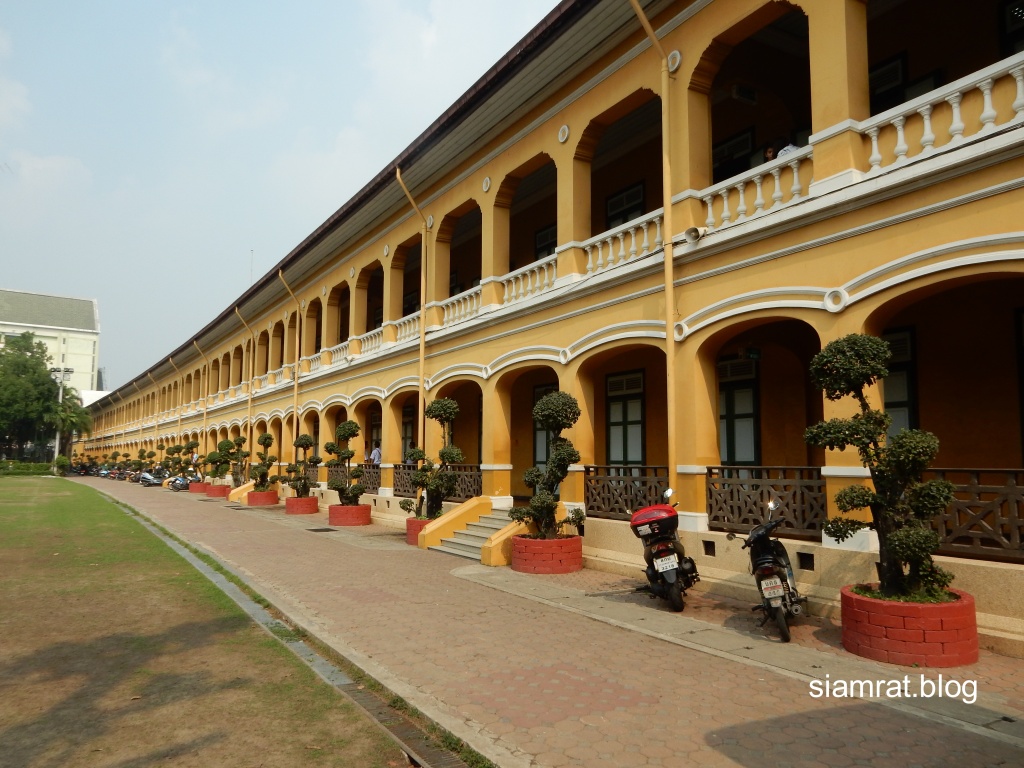
On March 2nd 1900*, a football game following Football Association rules was organised on Sanam Luang in front of the Grand Palace, between The Bangkok Team and The Department of Education Team. Although both teams fielded predominantly English players there were four Thai players on the Bangkok team. The match stirred considerable interest in Bangkok. The opening goal was scored for The Department of Education by Ernest Smith, the 27 year old Principal of Suan Kularp Wittayalai School who had previously played for Aston Villa in England. The game ended in a 2-2 draw and everybody went home satisfied with the day’s entertainment.
Soon after this match Luang Phaisan Silapasat translated the English FA rules into Thai and these were distributed to schools in Bangkok. The following year the Department of Education began a football competition for the under 20’s, the first year’s winners being the Teacher Training College. At the same time the newly created Teachers Association started its own competition for teachers and education officials that also helped spread the game throughout the country.
The Golden Age
Whilst the British dominated Ministry of Education embraced and promoted football as an ideal recreational pursuit for Thai youth the German dominated Ministry of Defence resisted this new sport. For German military officers professionalism was paramount and Kaiser Wilhelm II is reported as having told King Chulalongkorn
“These [British] officers were more concerned with playing cricket and polo than their job. They are not serious about the military like German soldiers. An army will never get better until it can make its officers think the army is their business and it is imperative that they work eight hours a day as diligently as in a general trading company.”
All this was to change after 1910 when King Vajiravudh (Rama VI) came to the throne. From the age of twelve Vajiravudh had been educated in England, first by private tutors and later entering Sandhurst Royal Military College followed by Christ Church College, Oxford. Inculcated with the ways of an English gentleman King Vajiravudh saw football as a fine way for young men to develop their fitness and hardiness as “warriors” whilst learning the ideals of fair play and developing the close bonds of friendship that came from playing together.
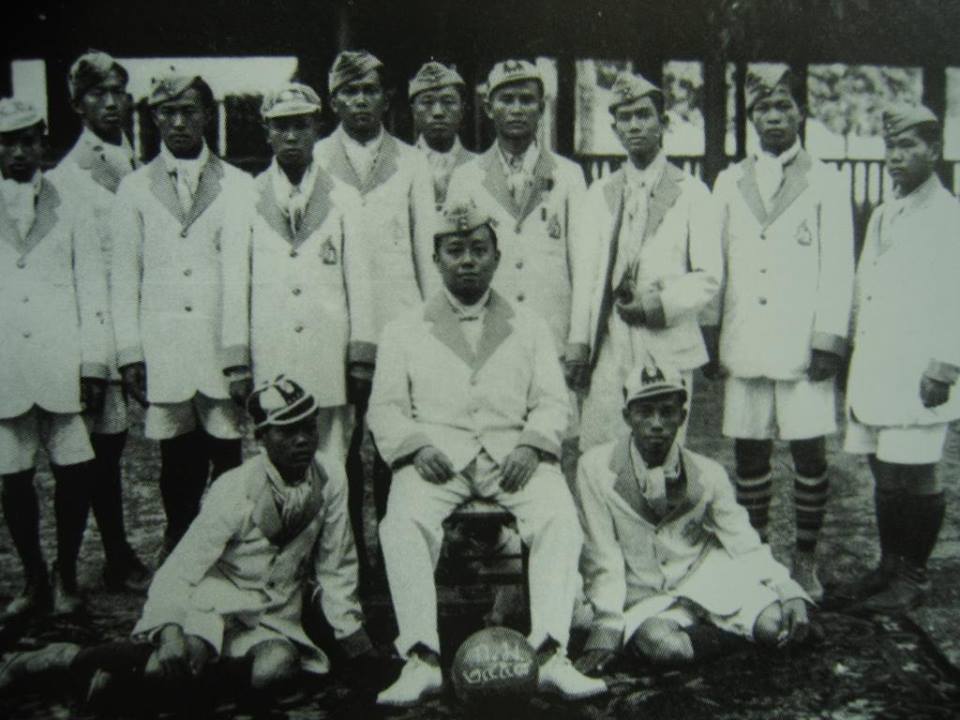
Initially King Vajiravudh took an interest in the sports competitions held by the major schools such as Suan Kularp and the Royal Pages School, attending their sports events and handing out prizes. Then in 1915 after arranging what was perhaps a trial series of eight football matches between teams of the army, police and his Wild Tiger Corps, the king put out the challenge to the British dominated Royal Bangkok Sports Club to meet with the Royal Hunters Company of Wild Tigers. The match was played on September 5th, 1915, and despite the Thais losing to the British side it sparked football fever across Bangkok. Newspapers reported later that month that “there is not a football to be bought for love or money in Bangkok.“
Less than a week later on September 11th the king initiated the “Gold Cup” competition of 12 Thai teams formed from all branches of the armed forces, the police and various government departments. The competition ran for three rounds with 28 games in total. The king was personally involved in organising the event and enthusiastically attended almost every game, sometimes in pouring rain. The contest culminated on October 27th with a win at the Wild Tiger Stadium in Dusit for the Royal Naval College team. The contest became an annual competition known as the “Warriors Cup” held at Sanam Chandra Palace in Nakhon Pathom, although a new cup had to be bought in 1916 because nobody had thought to tell the initial victorious team that the cup was to be returned each year. The original Gold Cup is still on display at the Royal Naval College.
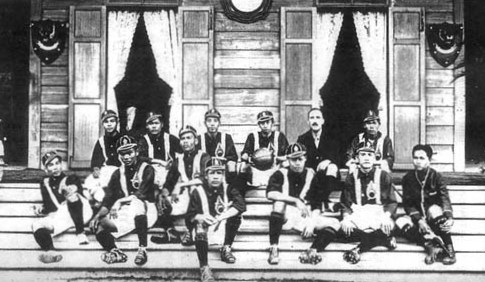
In November 1915 the Siam Football Federation was formed to establish the first national team for Siam dressed in red and white. This new national team first played against the Bangkok Sports Club team of British players, on November 23rd 1915. The king attended in person and watched from a special pavilion built for the occasion. Seating was also provided for some 350 spectators, one section for Thais and another section for Europeans. The Thai team captained by Mom Ratchawong Sitthaporn (Who’s day job was Director-General of the Royal Mint) won the match 2-1 whereupon the “onlookers threw their hats, applauded, and shouted in front of the pavilion”. The press duly reported “His Majesty was really delighted with the result.”
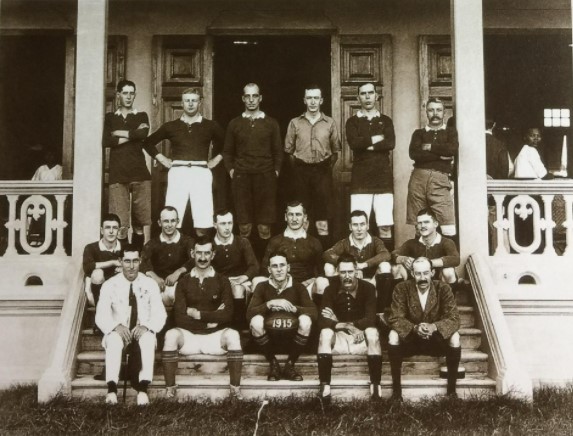
On April 25th 1916 the Football Association of Siam under the Royal Patronage of His Majesty the King was established. The association’s first president was Phraya Prasit Supakarn (Later Chaophraya Ramrakop), the king’s favourite courtier. The Football Association established two new annual competitions, the “Big Cup” and “Small Cup” which were held in grounds around Bangkok with the finals at Wild Tiger Stadium. The first winners of the Big Cup in that 1916 contest were the Department of Theatre who defeated the Ministry of Justice.
The Modern Competition
Siam was the first Asian nation to be invited to join the International Federation of Association Football (FIFA) in June 1925. They were subsequently invited to take part in the first World Cup in Uruguay in 1930 but there were insufficient funds at the time to send the national team on such a long journey. But their first international experience came that same year when they played in Saigon against a side representing French Indochina. In 1956 the Thai national team had their first international competition experience by participating in the Melbourne Olympics where they were defeated by their old foes Britain.
The Big and Small cup competitions continued until 1996, although in 1962 two lower levels were introduced to allow for the growth in number of clubs in the competition and the cup names were changed from Big and Small to Gor (ก) and Khor (ข) plus the new cups Khor (ค) and Ngor (ง). In 1996 a new league structure was introduced with the highest level being the Thai Premier League. The Gor Cup was dropped although the three lower cups persisted until 2015.
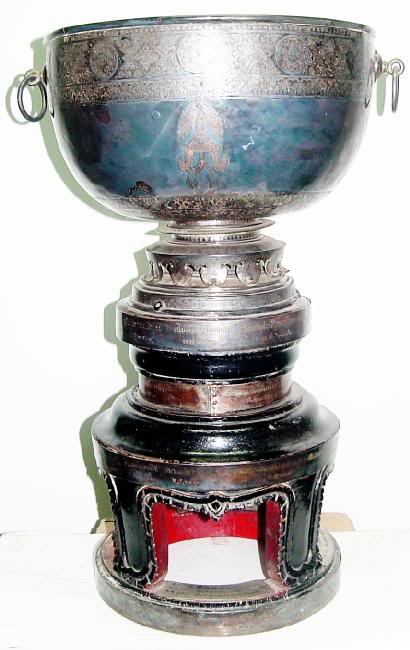
Today the Thai football league comprises four professional or semi-professional league levels together with an amateur league. Thai League 1 is currently sponsored by Toyota with the winners being awarded the Hilux Revo League Cup. In addition the Football Association of Thailand organises an annual international competition in which the national team competes for the King’s Cup against invited international teams.
Thai Football Museum
For King Vajiravudh the promotion of football was intimately linked with his desire to modernise his country and to instil a sense of unity and national pride in his subjects. Throughout his reign the king put a great deal of his energy into the Wild Tigers, a paramilitary organisation that he created to not only strengthen national defence but also as a vehicle for promoting his vision of nationalism. Wild Tiger drills and manoeuvres were carried out regularly at the king’s favourite palace of Sanam Chandra in Nakhon Pathom. So it was also here that many of the early football matches of his reign were held, the Wild Tigers forming numerous football teams.

Today on the grounds of Sanam Chandra Palace one of the old teak houses is dedicated as a museum run by the Football History Association of Thailand. Here one can view photographs and memorabilia from the golden age of Thai football.
Did You Enjoy This Article ?

Where to Go
References
- Chaiyo! King Vajiravudh and the development of Thai Nationalism. Vella, Walter F., The University Press of Hawaii, 1978.
- http://www.siamfootball.com
- http://www.fathailand.org/history
- http://www.vajiravudh.ac.th/OVtoVC/OVtoVC_81.htm
- https://th.wikipedia.org/wiki/ฟุตบอลทีมชาติไทย#ก่อตั้งทีม_(2458–2482)
- https://en.wikipedia.org/wiki/Thai_football_league_system
*Note : Several Thai language sites date this first game as “Saturday March 2nd, 1900”. But March 2nd 1900 was a Friday. There is thus some confusion about the actual day that this game was held on.
Header Photo: Thai fans at the 2020 AFF Suzuki Cup (By AFP)

Leave a comment